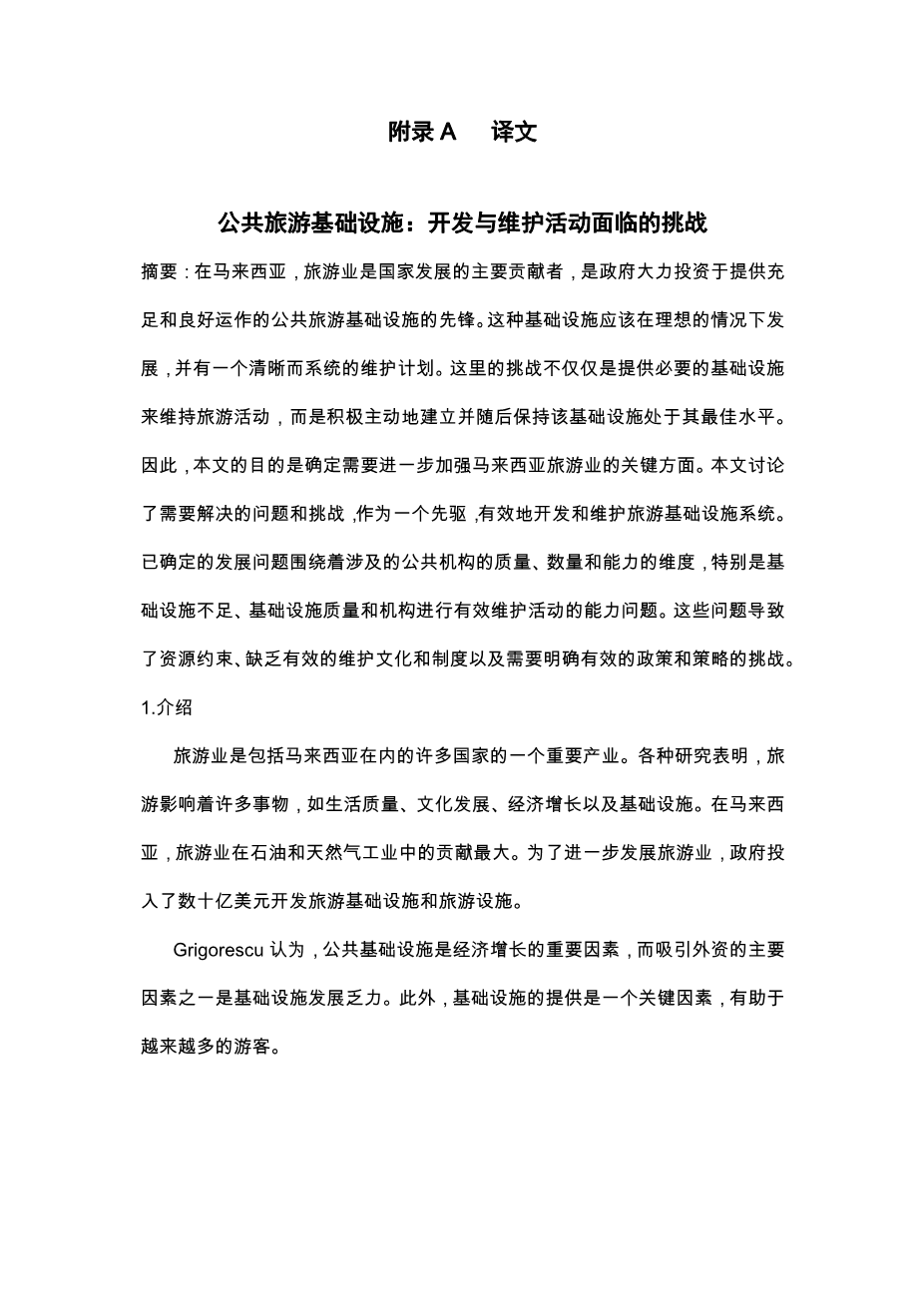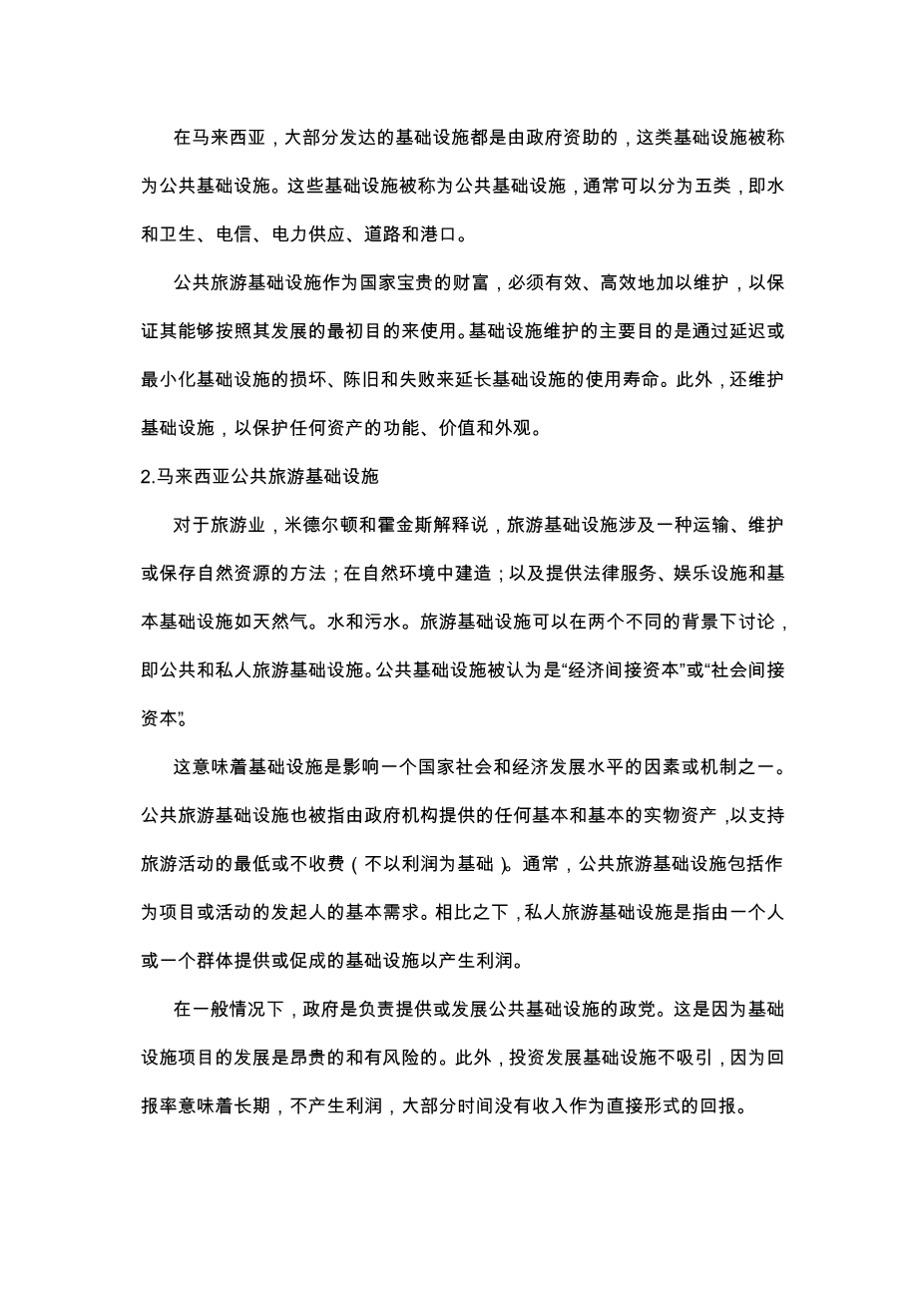A factor-cluster analysis of tourist motivations:
A case of U.S. senior travelers
Abstract: In Malaysia, the tourism sector is a major contributor to the nation’s development and is spearheaded by the government’s efforts in investing heavily towards providing sufficient and well-functioning public tourism infrastructure. This infrastructure should be ideally developed with a clear and systematic maintenance plan in hand. The challenge herein is not merely providing the necessary infrastructure to sustain tourism activities but rather a pro-active approach towards establishing and subsequently maintaining this infrastructure at its optimal level. The aim of this paper therefore is to identify critical aspects that need to be in place to further enhance the Malaysian tourism industry. The paper discusses the issues and challenges that need to be addressed as a precursor towards an effectively developed and maintained tourism infrastructure system. Development issues that have been identified revolve around the dimensions of quality, quantity and ability of the public agencies involved, particularly issues of inadequate infrastructure, quality of infrastructure and the capability of the agencies in undertaking efficient maintenance activities. These issues were found to lead towards challenges of working with resource constraints, lack of an effective maintenance culture and system as well as the need for clear and effective policies and strategies.
1.Introduction
Tourism is an important industry in many countries including Malaysia. Various studies have shown that tourism influences many things such as the quality of life, cultural development, economic growth and also infrastructure. In Malaysia, tourism industry contributes the highest revenue after oil and gas industry. In order to further develop the tourism industry, the government has spent billions ringgit to develop tourism infrastructure and facilities for tourism.
According to Grigorescu [1] public infrastructure is important for economic growth and one of the main factors of the failure to attract foreign investor is due to poor development of infrastructure. Moreover, the provision of infrastructure is one of the key factors that contribute to the increasing number of tourists.
Most of tourist destinations in Malaysia, particularly in the urban areas, have good tourism infrastructure due to the government’s commitment to improve the tourism industry. According to The Saigon Times , Malaysia is one of the ASEAN countries with the capability to provide sufficient tourist infrastructure while Vietnam is still lagging behind. The government has always taken seriously the need to provide adequate tourism infrastructure. As an example, in the country’s development plan, especially in the Seventh Malaysia Plan (7th MP) to Tenth Malaysia Plan (10th MP) a large sum of money was allocated to fund the development of tourism infrastructure in Malaysia.
As a valuable asset to the country, public tourism infrastructure should be maintained efficiently and effectively to ensure that it can be used in accordance with the original purpose of its development. The main objective of the maintenance of infrastructure is to prolong the service life of an infrastructure by delaying or minimizing the damage, obsolescence and the failure of the infrastructure to function. In addition, infrastructure is also maintained in order to protect the function, value and appearance of any asset.
2 .Public tourism infrastructure in Malaysia
For tourism sector, Middleton and Hawkins explained that tourism infrastructure involves a method of transporting, maintaining or preserving natural resources; construction in the natural environment; and the provision of legal services, recreational facilities and basic infrastructure such as gas, water and sewage. Tourism infrastructure can be discussed in two different contexts, namely public and private tourism infrastructure. Public infrastructure is considered as the “Economic Overhead Capital” or “Social Overhead Capital” .
This means that the infrastructure is one of the factors or mechanisms that influence the level of social and economic development of a country. Public tourism infrastructure is also referred to any general and basic physical asset provided by government agencies to support tourism activities at minimum or no charge (not based on profit). Typically, public tourism infrastructure consists of basic needs that serve as an initiator of a program or activity. In contrast, private tourism infrastructure is referred to the infrastructure provided or facilitated by a person or a group to generate profit.
Under normal circumstances, the government is the party responsible to provide or develop public infrastructure. This is because the development of infrastructure projects is costly and risky. In addition, the investment to develop infrastructure are not attractive due to the rate of return means long terms, do not generate profit and most of the time no income as direct forms of return .
Development and provision of tourism infrastructure is seen as a pre-requisite to become a popular tourist destination. An attractive tourist destination is not only relying on its natural resources, but also on its available infrastructure and facilities. tourism infrastructures are the main factor considered in choosing tourist destination. Infrastructure plays an important role in the tourism industry of an urban area as it affects the level of tourist satisfaction; and adequate and good condition of infrastructure will reduce the number of negative response received from tourists. Business Opportunities created from the development of infrastructure are also beneficial to the shareholders of tourism industry.
This is in line with the statement made by Lerner and Haber as they explained that the d
剩余内容已隐藏,支付完成后下载完整资料


英语译文共 4 页,剩余内容已隐藏,支付完成后下载完整资料
资料编号:[468346],资料为PDF文档或Word文档,PDF文档可免费转换为Word
您可能感兴趣的文章
- COVID-19时期的旅游业和可持续发展:以西班牙为例外文翻译资料
- 农民相对剥夺感对乡村旅游可持续发展的影响机制外文翻译资料
- 校园大学生的旅行行为——以亚洲某乡村大学为例外文翻译资料
- 内容旅游与地方社区响应:鹫宫的“幸运之星”和“协作动漫旅游”外文翻译资料
- 基于符号互动理论的遗产旅游资源开发与重塑——以良渚古城遗址为例外文翻译资料
- 在TikTok上映射互联网名人:探索注意力、经济和可见性劳动力外文翻译资料
- 基于社区游客视角的环境责任行为的概念和度量外文翻译资料
- 温泉小镇的再造:维希的独特案例——副标题外文翻译资料
- 基于IP理念的桐乡丰子恺文化旅游开发研究外文翻译资料
- 特殊事件对旅游业的影响及其应对措施研究——新冠肺炎疫情对全球旅游业的影响及其应对措施外文翻译资料


